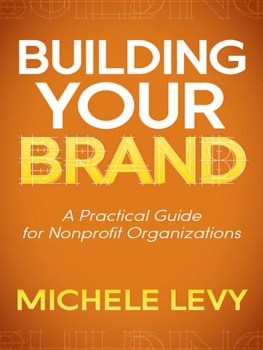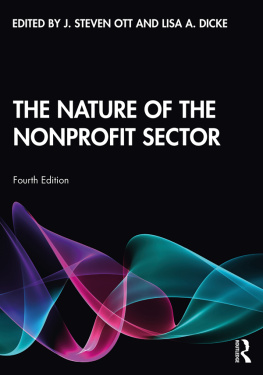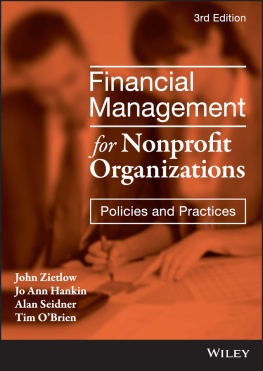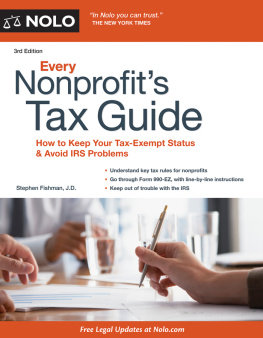Norton - How to Be a Global Nonprofit: Legal and Practical Guidance for Internationa
Here you can read online Norton - How to Be a Global Nonprofit: Legal and Practical Guidance for Internationa full text of the book (entire story) in english for free. Download pdf and epub, get meaning, cover and reviews about this ebook. year: 2013;2012, publisher: John Wiley & Sons, genre: Politics. Description of the work, (preface) as well as reviews are available. Best literature library LitArk.com created for fans of good reading and offers a wide selection of genres:
Romance novel
Science fiction
Adventure
Detective
Science
History
Home and family
Prose
Art
Politics
Computer
Non-fiction
Religion
Business
Children
Humor
Choose a favorite category and find really read worthwhile books. Enjoy immersion in the world of imagination, feel the emotions of the characters or learn something new for yourself, make an fascinating discovery.

How to Be a Global Nonprofit: Legal and Practical Guidance for Internationa: summary, description and annotation
We offer to read an annotation, description, summary or preface (depends on what the author of the book "How to Be a Global Nonprofit: Legal and Practical Guidance for Internationa" wrote himself). If you haven't found the necessary information about the book — write in the comments, we will try to find it.
How to Be a Global Nonprofit: Legal and Practical Guidance for Internationa — read online for free the complete book (whole text) full work
Below is the text of the book, divided by pages. System saving the place of the last page read, allows you to conveniently read the book "How to Be a Global Nonprofit: Legal and Practical Guidance for Internationa" online for free, without having to search again every time where you left off. Put a bookmark, and you can go to the page where you finished reading at any time.
Font size:
Interval:
Bookmark:

Copyright 2012 by Lisa Norton. All rights reserved.
Published by John Wiley & Sons, Inc., Hoboken, New Jersey.
Published simultaneously in Canada.
No part of this publication may be reproduced, stored in a retrieval system, or transmitted in any form or by any means, electronic, mechanical, photocopying, recording, scanning, or otherwise, except as permitted under Section 107 or 108 of the 1976 United States Copyright Act, without either the prior written permission of the Publisher, or authorization through payment of the appropriate per-copy fee to the Copyright Clearance Center, Inc., 222 Rosewood Drive, Danvers, MA 01923, (978) 7508400, fax (978) 6468600, or on the Web at www.copyright.com . Requests to the Publisher for permission should be addressed to the Permissions Department, John Wiley & Sons, Inc., 111 River Street, Hoboken, NJ 07030, (201) 7486011, fax (201) 7486008, or online at http://www.wiley.com/go/permissions .
Limit of Liability/Disclaimer of Warranty: While the publisher and author have used their best efforts in preparing this book, they make no representations or warranties with respect to the accuracy or completeness of the contents of this book and specifically disclaim any implied warranties of merchantability or fitness for a particular purpose. No warranty may be created or extended by sales representatives or written sales materials. The advice and strategies contained herein may not be suitable for your situation. You should consult with a professional where appropriate. Neither the publisher nor author shall be liable for any loss of profit or any other commercial damages, including but not limited to special, incidental, consequential, or other damages.
For general information on our other products and services or for technical support, please contact our Customer Care Department within the United States at (800) 7622974, outside the United States at (317) 5723993 or fax (317) 5724002.
Wiley also publishes its books in a variety of electronic formats. Some content that appears in print may not be available in electronic books. For more information about Wiley products, visit our web site at www.wiley.com .
Library of Congress Cataloging-in-Publication Data:
Norton, Lisa, 1956
How to be a global nonprofit: legal and practical guidance for international activities/Lisa Norton.
p. cm.
Includes index.
ISBN 978-1-118-45222-6 (cloth/website); 978-1-118-53467-0 (ebk); 978-1-118-53468-7 (ebk); 978-1-118-53472-4 (ebk) 1. Nonprofit organizationsLaw and legislationUnited States. 2. Nonprofit organizationsLaw and legislation. I. Title.
KF1388.N68 2013
346.73064dc23
2012037488
To Harvey, my husband of 20 years, who has been my
greatest cheerleader throughout this project,
and to my four children,
Wendy, Nat, Naomi, and Ruby,
who suffered through innumerable discussions of this topic.
List of Case Studies
| Chapter 1 | So You Want to Be a Global Nonprofit? Families with Children from China Pangea Giving (Pangea) SightLifeScaling Local Operations for Global Impact |
| Chapter 4 | Going Deeper: Operating a Foreign Program World Association for Children and Parents (WACAP) Agros International |
| Chapter 5 | Forming and Operating through a Foreign Legal Entity Ashesi University (Ashesi) World Vision Lumana Social Venture Partners International (SVPI) |
| Chapter 10 | Evolution of a Global Organization: Half the Sky Foundation |
Preface
It was not very many years ago that international philanthropy was the province of large organizations like the Red Cross, UNICEF, and Save the Children. Americans who wanted to help people overseas gave to those organizations and others like them. For donors who wanted a more personal connection, some organizations offered individual child sponsorship, which allowed donors to see the direct impact of their giving.
In recent years, while large global organizations have continued to attract funding, there has been a new groundswell of small and medium-sized organizations, formed by growing numbers of individuals who want to do more than write a check or even sponsor a child. This phenomenon was described by Nicholas Kristof in a New York Times Magazine article in which he coined the term Do-It-Yourself Foreign Aid, to identify a revolution that starts with the proposition that it's not only presidents and United Nations officials who chip away at global challenges.
Kristof noted that the young idealists he was describing are sometimes naive about what it takes to solve social problems, and don't always appreciate the need to work collaboratively with the local populations they intend to serve. This book focuses on another set of issues not readily apparent to the passionate leaders of the Do-It-Yourself Foreign-Aid Revolution: the myriad and diverse legal considerations that must be taken into account in planning and operating any nonprofit organization with cross-border activity.
A new army of international philanthropists is boldly forging ahead, creating nonprofit organizations, raising funds in the United States and sometimes abroad, traveling overseas, building relationships with foreign individuals, organizations, and governments, and even hiring local employees. The new international nonprofits they create often have all, and sometimes more, of the passion and commitment found in their larger counterparts. What they often lack are the resources to engage staff and consultants to ensure that they comply with U.S. and foreign laws while keeping their eyes on the mission.
While it is widely recognized that the Internet and social media have eliminated jurisdictional boundaries in so many ways, legal boundaries are alive and well. Individual countries enact and enforce their own laws and work hard to protect their tax revenues. In fact, as we will see throughout this book, legal and tax barriers imposed by individual countries impede the cross-border activities of nonprofits to a far greater degree than they affect international trade.
The operations of nonprofit organizations, in the United States and abroad, are shaped by a variety of laws: notably, those addressing legal structure and governance (such as formation of nonprofit corporations); taxation (including income, estate, sales, excise, property, import duties, and more); anti-terrorism; exports; currency; corruption; immigration; and labor. In some countries, restrictions on the freedom of association preclude or hamper nonprofit organizations. When an organization operates across borders, whether by making grants or directly operating programs, the interaction among legal requirements of two or more countries quickly becomes highly complex.
This book is intended primarily for nonprofit organizations that qualify for U.S. federal tax-exempt status, as so-called 501(c)(3) organizations, and operate and/or fund non-U.S. programs. While there are many categories of U.S. tax-exempt organizations, the 501(c)(3) is the only one (with narrow exceptions) that can attract tax-deductible funds in the United States. While this type of organization may directly operate or fund foreign programs, those foreign programs must also serve 501(c)(3) purposes. A broad range of organizations falls into the 501(c)(3) category, including, among others, those that are engaged in traditional charitable activities such as humanitarian aid, disaster relief, development, global health, the environment, and scientific research.
We will see in this book that any particular foreign country may or may not afford tax-exempt status to an activity that would qualify for it in the United States. Moreover, if in addition to operating foreign programs, an organization is raising funds in one or more foreign countries, it will need to deal with yet another set of rules and restrictions on the use of those funds.
Font size:
Interval:
Bookmark:
Similar books «How to Be a Global Nonprofit: Legal and Practical Guidance for Internationa»
Look at similar books to How to Be a Global Nonprofit: Legal and Practical Guidance for Internationa. We have selected literature similar in name and meaning in the hope of providing readers with more options to find new, interesting, not yet read works.
Discussion, reviews of the book How to Be a Global Nonprofit: Legal and Practical Guidance for Internationa and just readers' own opinions. Leave your comments, write what you think about the work, its meaning or the main characters. Specify what exactly you liked and what you didn't like, and why you think so.











